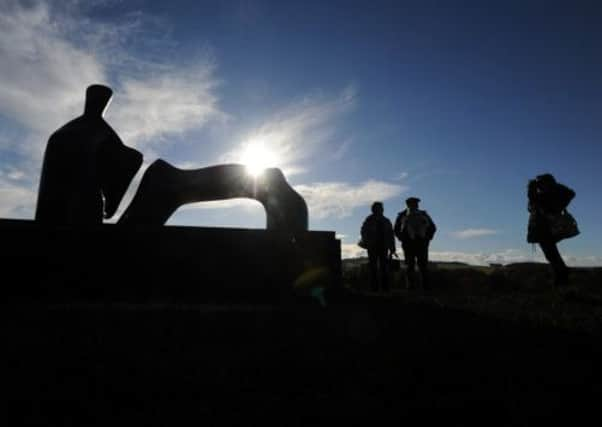Culture vultures flock to region transformed by Lottery grants


Hundreds of thousands of grants have been handed out, allowing 5,800 village halls across the country to be renovated and countless organisations from scouts to toddler groups have been helped to purchase much-needed equipment.
But in Wakefield, the money has helped to bring about a transformation in the city’s fortunes which has made international audiences sit up and take notice.
Advertisement
Hide AdAdvertisement
Hide AdIn the case of Wakefield, the focus has been on culture, sculpture and tourism and the grants awarded by Lottery bodies have been very significant.
Since 1998 there have been no less than nine Lottery-funded grants to the Yorkshire Sculpture Park at West Bretton, allowing the open-air sculpture gallery to further enhance its reputation.
The grants have ranged from a modest £3,400 to £1.5m and in total add up to more than £4m.
In that time the sculpture park has taken over and restored huge swathes of the 18th century-designed Bretton estate, not to mention acquiring various historic buildings including Bretton Chapel and High Hoyland Chapel.
Advertisement
Hide AdAdvertisement
Hide AdThe park now covers an impressive 500 acres, making it one of the largest of its kind in Europe. And it’s also one of the most popular, attracting an estimated 300,000 people a year to its outdoor sculpture trails, indoor galleries and restaurant and cafe.
But the Lottery-funded success story isn’t just about visitor numbers or the ethos of opening up art to everyone.
In hard cash terms the sculpture park has helped establish Wakefield as a place to visit.
A report in 2011 estimated that the Yorkshire Sculpture Park was worth close to £5m a year to the Yorkshire economy, primarily benefiting Wakefield and Barnsley.
Advertisement
Hide AdAdvertisement
Hide AdThe independent report, while not specifically crediting the Lottery for the success of the park, said the attraction had become so successful that it had changed many people’s perceptions of the county of Yorkshire.
The report concluded: “It is clear that YSP is a unique and nationally and internationally regarded arts venue, and a top visitor attraction in Yorkshire. As such, it has had a highly significant impact in recent years in terms of changing perceptions about Yorkshire (and Wakefield in particular), and also of art in Yorkshire.”
But the story of the sculpture park tells only a small part of the impact of the Lottery on the historic city of Wakefield.
Just down the road from the sculpture park is the Hepworth Wakefield, a gallery which opened in 2011 and helped cement Yorkshire’s reputation as a world centre for sculpture.
Advertisement
Hide AdAdvertisement
Hide AdThe waterfront gallery development was backed by Wakefield Council but it is doubtful the project would have happened without a £5m Heritage Lottery Fund grant. The Hepworth brings into Wakefield art lovers from all points on the compass – from home and abroad – and was called “one of the finest contemporary art museums in Europe” by one national newspaper.
A spokeswoman for the National Lottery said millions of pounds are raised for good causes every week but the vast majority – 70 per cent – of grants awarded are for £10,000 or less. “The National Lottery raises over £35m a week for good causes all over the UK and provides life-changing support to communities.”
And Vicki Kennedy from the National Lottery Good Causes said: “National Lottery players have raised an incredible £30bn since it launched in 1994 for a range of great projects.
“No matter what your interests, we’re bound to have funded something that you or your family are benefiting from.”
To see the difference the National Lottery makes in your community go to www.lotterygoodcauses.org.uk